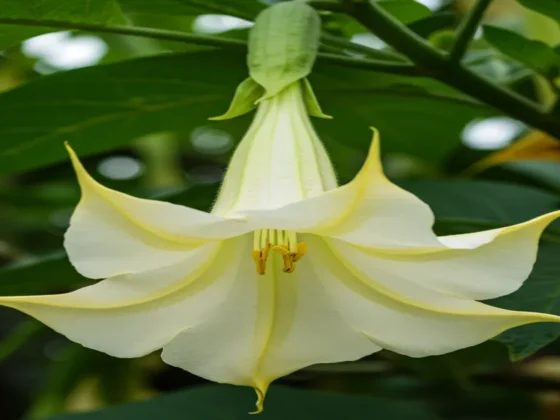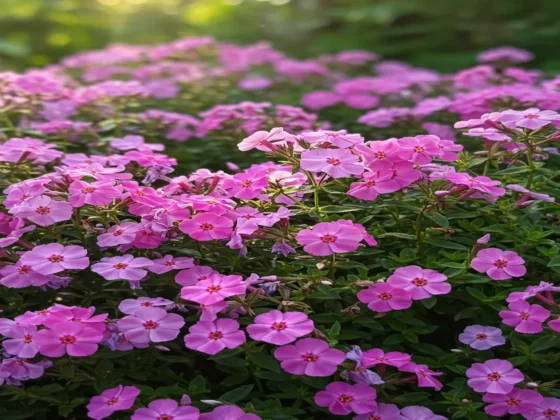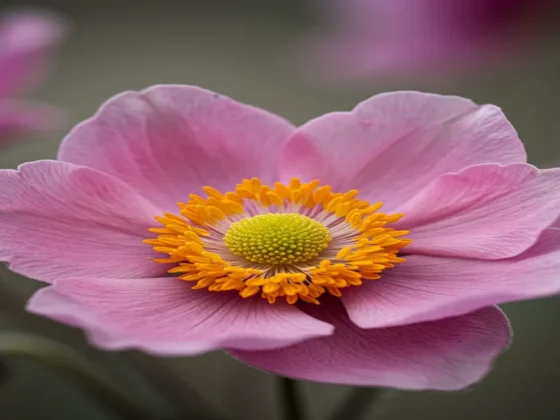The ‘Angelina’ stonecrop (Sedum rupestre ‘Angelina’) is a perennial, evergreen plant with succulent foliage that creates a low-growing mat. Its name “stonecrop” originates from Middle English, describing its ability to thrive in rocky, gravelly locations. The ‘Angelina’ variety of S. rupestre displays chartreuse or golden needle-like leaves, depending on sunlight exposure, and produces small yellow flowers in summer. As autumn approaches, its foliage transitions to an orange or rust hue.
‘Angelina’ is typically planted in spring, but this resilient plant can be grown almost any time. It grows moderately fast but may take a year or two to bloom.
Propagation of ‘Angelina’ Stonecrop
‘Angelina’ stonecrop plants can be easily propagated through stem or leaf cuttings, or by growing them from seeds. Stems that detach from the main plant can naturally root if left undisturbed. Propagation can be successful at any time during the growing season due to the plant’s resilience, but it is most effective in late spring or early summer. Taking cuttings is a simple method to obtain new plants and prevent overcrowding of the parent plant.
To propagate ‘Angelina’ stonecrop through stem or leaf cuttings:
Instructions for Propagating ‘Angelina’ Stonecrop from Seeds
To start growing stonecrop from seeds, it is recommended to begin four to six weeks before the final frost date in spring. Alternatively, you can plant the seeds directly outdoors early in the spring after the last frost has passed.
Repotting ‘Angelina’ Stonecrop in Containers
‘Angelina’ stonecrop cultivated in containers needs more attention compared to stonecrop grown in the ground. The ideal time to repot sedum is during spring when it has become too big for its current container and shows signs of being rootbound. Just because stonecrop is overflowing from its container doesn’t necessarily mean the pot is too small. If you prefer the plant not to cascade out of the container, you can trim some of the trailing stems. To determine if the plant is rootbound, carefully turn the plant upside down in your hands and inspect the root system. If you notice an abundance of roots encircling and congesting the soil, it’s time to repot.
When transferring to a new container, select one that is one to two inches larger in size. Utilize high-quality, well-draining soil. Due to stonecrop’s shallow roots, it can thrive in containers of various sizes and shapes, including shallow bowl planters, as long as they have drainage outlets.
Winter Protection
The majority of sedums, like ‘Angelina,’ are resilient to cold weather and can remain outdoors during the winter. When the leaves die off in winter, remove the dead growth.
If the sedum is in a container, position it in a sheltered place, such as near a building or among other containers that can shield it from strong winter winds. It is advisable to relocate the containers away from direct sunlight as warm winter days can lead to thawing, followed by freezing temperatures. Frequent thawing and freezing cycles can harm the root systems.
Containers covered with snow or ice tend to fare better than those left exposed. In case of extremely low temperatures beyond your plant’s hardiness zone, consider wrapping the containers with thick burlap or even planting them in the ground to offer better protection during severe winters. Come spring, it is simple to unearth the containers once the ground thaws.
Widespread Pests
Similar to other stonecrops, ‘Angelina’ is largely unaffected by pest and disease issues, except for potential damage caused by slugs and snails consuming the leaves. While uncommon, scale insects may occasionally infest stonecrop plants. The most effective treatment for scale involves using insecticidal soap during the early larval phase and neem oil during the adult insect phase. ‘Angelina’ is resistant to deer and rabbits.
How to Encourage Blooming in ‘Angelina Stonecrop’
‘Angelina’ stonecrop produces yellow, star-shaped blooms during mid-summer, which attract birds, bees, butterflies, and other pollinators for approximately four weeks. Most sedums emit a light, almost imperceptible sweet scent. ‘Angelina’ stonecrop typically does not flower during its initial or subsequent growing seasons. However, after a few years of maturation, most sedum plants reliably bloom each year.
To enhance blooming, trim any remaining dead stalks or branches of sedum in early spring using sharp, sterilized pruning shears. Pruning promotes vigorous new growth.
If your mature stonecrop is not flowering, it might be due to insufficient sunlight. Stonecrops grown in the shade seldom bloom. Additionally, ensure that the plant is not sitting in waterlogged soil. Most stonecrop varieties do not flower well in overly wet conditions.
Right after the ‘Angelina’ flowers start to wither, prune the flower stalk back to its stem’s base. This not only tidies up the plant but could also encourage another flush of flowers if the growing conditions are favorable for the plant.
Common Issues With ‘Angelina’ Stonecrop
‘Angelina’ stonecrop is a tough plant that is typically resistant to diseases and pests. Problems usually arise when the plant is not in suitable environmental conditions.
Discoloration of Stems, Dropping Leaves
If you notice discoloration on the stems with small white, red, or brown bumps near the soil line, it could be due to crown rot (also known as stem rot or southern blight). This fungal disease in the soil can lead to plant death, especially in high humidity conditions. While fungicides may help in the garden, it’s advisable to remove and dispose of the infected plant to prevent further spread, especially if other plants are nearby.
Dead Spots on Leaves
Another fungus, botrytis mold or leaf blotch, can cause dead spots on leaves and affect flowers, particularly after periods of high humidity and warm climates. To manage this, remove dead or diseased parts using sterilized pruning tools. If the entire plant is affected, it’s best to remove and discard it.
Stems Becoming Too Leggy
If your ‘Angelina’ plant is becoming leggy, ensure it’s receiving sufficient sunlight. Stems might stretch out in search of more sunlight if placed in a shady spot. Gradually move the plant to a slightly sunnier location instead of exposing it to full sun immediately, as this could harm the leaves unaccustomed to direct sunlight.
If lighting conditions are adequate and the plant remains leggy, consider pruning to encourage bushier growth. Pruning also allows you to collect stem cuttings for propagating new plants. Trimming stimulates the plant to grow more compactly at the cut point, rather than sprawling as before.
FAQ
Can ‘Angelina’ stonecrop be grown indoors?
Yes, ‘Angelina’ can thrive indoors. Most sedums make great houseplants, needing at








